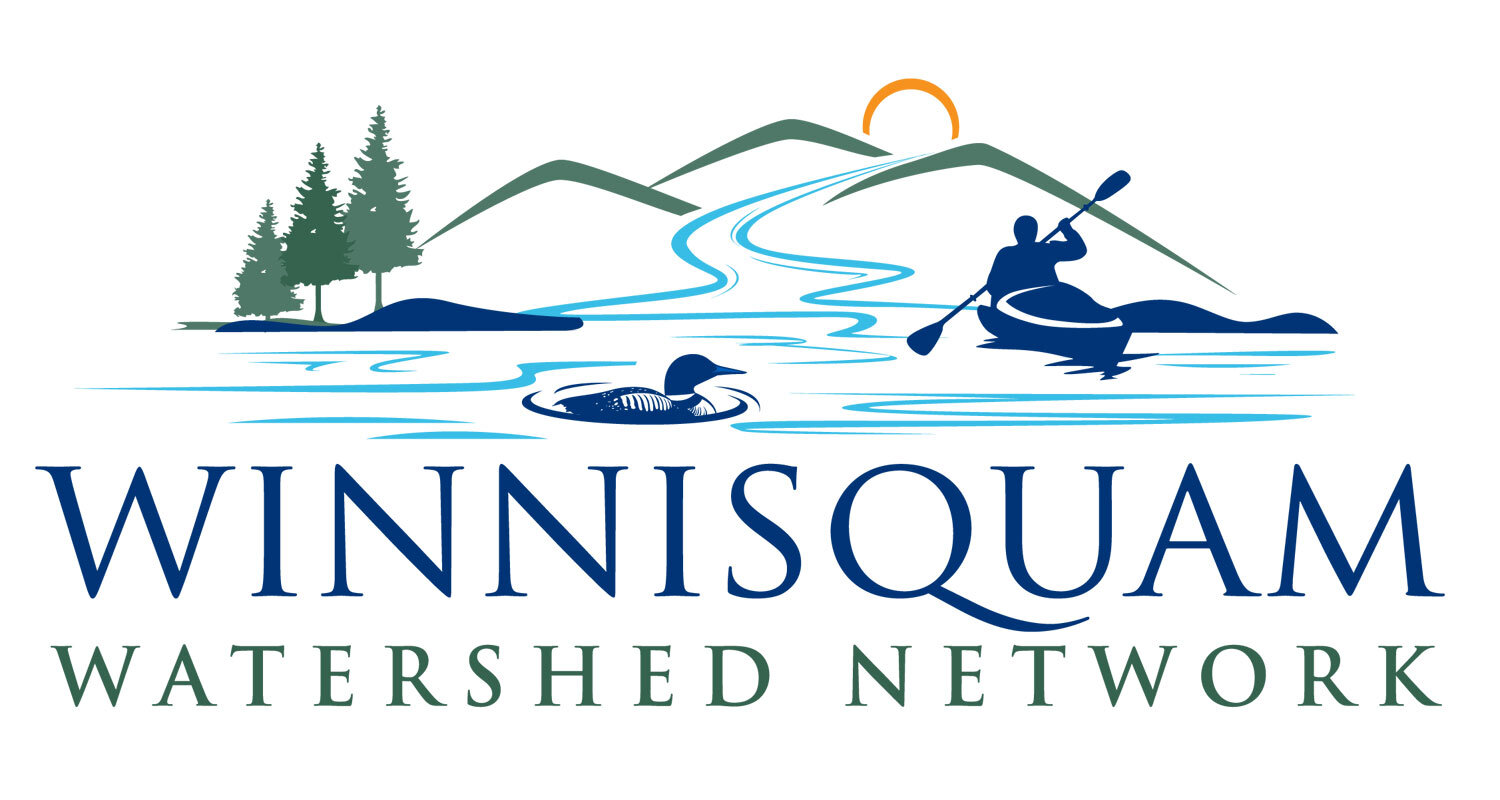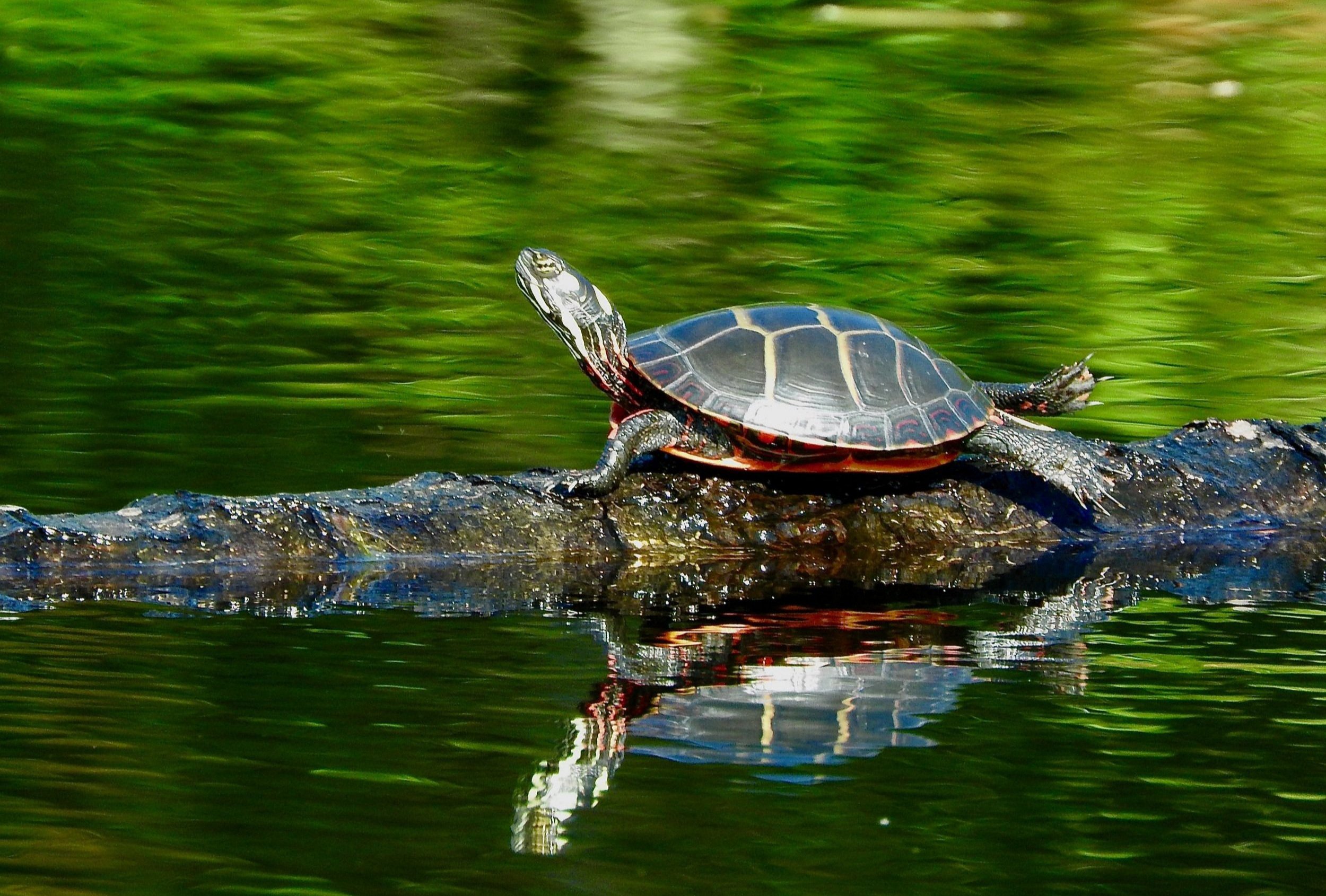
Collaboration With Community Partners
In addition to our own programs, the WWN supports the work of several other partner organizations in the community that benefit our watershed, raise environmental awareness and/or educate our community. At this time we have 2 active programs that we’re working on with our partners.
WWN Supports Regional Trout in the Classroom Program
The Sanbornton Conservation Commission (SCC) and Winnisquam Watershed Network have partnered to re-introduce the highly regarded "Trout in the Classroom" (TIC) education program back into the Sanbornton Central School for the 2024-2025 school year. The program was taught by SCS’s STEAM Teacher Andrew Veilleux, who along with two members of the SCC attended the NH Fish & Game’s Watershed Education Trout in the Classroom educator classes this fall.
The intent for WWN this year is to support this NH Trout Unlimited Trout in the Classroom sponsored program for Sanbornton’s 4th grade students with plans to offer this curriculum the next academic year into other communities and learning institutions that surround Lake Winnisquam. This nationally available learning experience gives our 3rd and 4th grade Sanbornton students an opportunity to care for and monitor Eastern Book Trout eggs, raise them to the fingerlings stage (where they can eat on their own) and then release them in early spring into a local Sanbornton stream. The TIC curriculum has proven to be an excellent means to give learners a hands-on way to learn the importance of interacting with and protecting NH’s wildlife, land and water ecology systems. Under this collaborative effort, there is no cost to the school district or town of Sanbornton to conduct this program. SCC and WWN have provided the equipment (tanks, filters, etc.), Trout Unlimited and NH Fish & Game’s Watershed Education Program provided the all-important tank chiller and learning material, while the 200 trout eggs the school received were supplied by NHF&G Fish Hatchery Program.
Andrew Veilleux, SCS STEAM teacher
The team secured the Sanbornton Central School’s Trout Rearing and Release Permit from NHF&G, installed the tank and associated equipment in the school’s library and received the trout eggs from NHF&G’s New Hampton Fish Hatchery before Thanksgiving.
The eggs did well through the Thanksgiving and Christmas breaks. Using the chiller to maintain a constant temperature of 35-36 degrees, the eggs continued to develop at a steady rate which the children tracked daily on a chart as part of the TIC curriculum. In early January the students were thrilled to witness the Eastern Brook Trout eggs hatch into what is referred to as the sac fry or alevin phase of development.
As of April 4 approximately 180 trout fry were almost ready for release
This was a very exciting experience for the students who looked in on the fish and talked about trout development at the beginning of every class. As of March, the students were seeing the "brookies", now considered a fry or fingerling, swimming up and searching for food the students were providing each day. This key development signaled the next important step in the Trout in the Classroom project and that is to release the trout into a local Sanbornton stream to flourish and grow.
Members of WWN and SCC were able to find a suitable release point on Salmon Brook that would provide all the important physical and environmental characteristics necessary for young trout to survive and thrive. An ideal site was identified and the local Sanbornton property owner graciously and enthusiastically agreed to allow the students to access the property and release the trout in their portion of Salmon Brook.
Kayla Marshwood, NH Fish & Game, speaks to TIC students
A bright and sunny April 24th saw the successful culmination of the school’s Trout in the Classroom program with the release of Eastern Brook Trout fingerlings into Salmon Brook. Forty SCS fourth graders sent off the young trout they had raised since November from eggs into Salmon Brook on the property of the McFadden and Carpenter families. Each student was handed a small cup with four or five young trout hatchlings that they released into the stream. The students were joined by SCS's Trout in the Classroom (TIC) lead teacher Andrew Veilleux, additional SCS staff, members of SCC and WNN along with Kayla Marshwood, NH Fish & Game’s Watershed Education Coordinator who spoke to the students prior to the release.
News Reporter Daniel Sarch of the Laconia Daily Sun also attended the trout release event and authored this story which was featured in the Sun’s April 25th publication: Trout in the Classroom Connects Learning with Nature.
4th graders release trout into Salmon Brook
WWN will be exploring expansion of the Trout in the Classroom Program to other schools within the Winnisquam Watershed for the 2025-2026 academic school year. If you would like more information about participating in a WWN sponsored watershed education program contact blaroche@winnisquamwatershed.org
WWN Supports Upcoming Chapman Brook and Stoney Brook Stream Restoration Projects
The Winnisquam Watershed Network along with its conservation partners the Sanbornton and Meredith Conservation Commissions are supporting the Belknap County Conservation District’s (BCCD) Winnisquam Watershed Stream Restoration initiatives. Similar in nature to the Black Brook Habitat Restoration project completed in 2022, these two new undertakings are designed to improve aquatic habitat which benefits stream dwelling species like the native Eastern brook trout populations. The planned stream restorations will consist of adding instream large wood to Chapman Brook in Sanbornton and Stoney Brook in Meredith, helping to mimic natural processes.
Why add wood to streams?
According to project co-sponsors BCCD, NHF&G and NH Trout Unlimited, large wood in streams is an important component of the forest ecosystem and serves a critical role in aquatic habitat. Placement of instream large wood changes water velocity to trap sediment, and creates cascades and riffles, which increases oxygen in the water. The alteration of flow and velocity aids in forming deeper pools where fish can survive the warmer summer water temperatures and recharges ground water. By collecting leaves and twigs, wood structures can also provide cover and refuge. Leaves and twigs, both organic matter, feed insects and invertebrates, which are the main food source for Eastern brook trout. Large wood additions to streams truly benefit the overall aquatic ecosystem and conserve habitat and water quality.
Both minimally invasive projects are only made possible through the spirited cooperation of the local landowners who provide permission for the work to be done on the waterways that pass through their properties. The initial stream assessment reports have been completed by Forrester Ryan Harvey, and the landowner authorizations collected by the sponsoring organizations.
In Sanbornton, there are 13 parcels (10 landowners) authorizing implementation on Chapman Brook tributaries. Funding for this project has been secured through a National Fish and Wildlife Foundation Grant. In Meredith, focus is on the West Fork of Stoney Brook as the best potential habitat. There are 9 parcels (5 landowners) authorizing implementation. Funding for this project has been secured through the NH Moose Plate Project with a small match from a NFWF Grant. NH DES permit application for both projects are in progress and plans are to complete the wood additions in September 2025.
Check out this video from NH Fish & Game on the importance of wood in streams and how this collaborative effort of local conservation organizations is helping to restore this fundamental part of a healthy watershed system.








